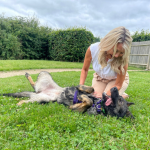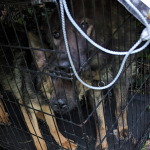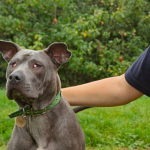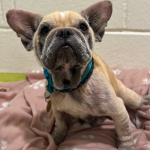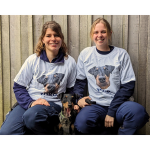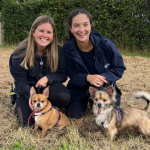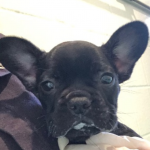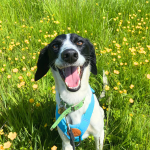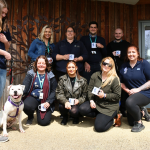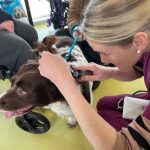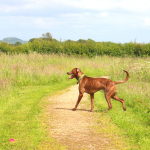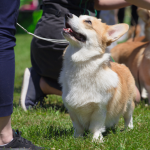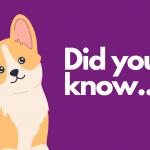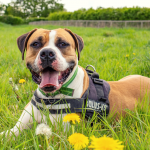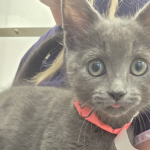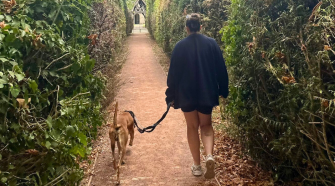
Dog theft is on the rise. Read our top tips to keep your pet safe.

Pet theft is a serious issue which sadly is affecting more and more dog owners in recent years.
Many members of our community will have noticed a rise in the number of local cases they’ve heard about, or conversation around this issue — so we’ve put together some information on the situation, as well as advice on simple precautions you can take to keep your furry friend safe, and what to do if the worst happens.
Why are we talking about dog theft?
Unfortunately, national statistics do indicate that dog theft has been on the rise over recent years, with Direct Line reporting that 2,438 dogs were reported as stolen in 2020, the equivalent of seven dogs every day. Behind each statistic is a family going through the devastating trauma of losing their pet, and in many cases this crime happens very close to home – with up to 70% of dogs being stolen from their owner’s property, according to a study by the Dogs Trust.
The Coronavirus pandemic and resulting lockdowns has led to a rise in dog ownership, and this increase in demand means that many criminals have turned to stealing dogs as a way to make a lot of money. Sadly, this means that puppy smuggling and illegal breeding through puppy farming is also on the rise.
Despite this, dog thefts are largely preventable — and we want to encourage our readers to consider a number of small changes which could make all the difference when it comes to protecting your pet.
Top tips for keeping your dog safe
- Firstly, never leave your dog unattended in public — whether that’s outside a shop or in your car.
- Work with your dog on their recall until you’re confident that they’ll come back to you, and if you’re not certain don’t take the risk of walking them off-lead — especially if you’re in an area you don’t know very well.
- Ensure your garden is secure and that there’s no way for your dog to escape, or for strangers to get in. If you have a gate, make sure it’s lockable, or you may want to consider installing a bell or alarm so that you can hear if anyone opens it. Other precautions like CCTV may also help deter thieves.
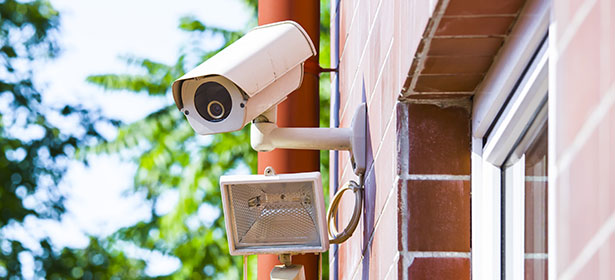
- Even if your garden is secure, don’t leave your dog unsupervised — always keep them in view.
- If your dog is microchipped, it’s much more likely that you’ll be reunited if they’re found by the authorities. It’s now a legal requirement to have your dog microchipped, but it’s also very important to update the registered details if you change your address or contact details.
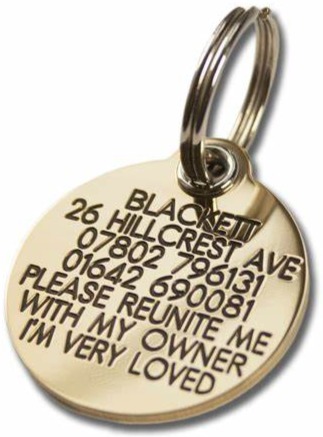
- Your dog should also wear a collar which clearly displays your address and contact details, which can help anyone who finds your pet get in touch with you quickly. You can also look into buying a GPS tracker for your dog’s collar for extra reassurance. However, be cautious of displaying your dog’s name on their collar, lead or harness — thieves can use this information to lure your dog away.
- Neuter your dog, as this can prevent them roaming, and will also reduce the likelihood of them being stolen for breeding.
- Keep clear, recent photographs of your pet and a list of any distinguishing features in case you need to put posters together quickly. It’s also important to keep photos of you with your pet, as a way to prove ownership if needs be.
- Be very wary of anyone who asks a lot of questions about your dog, shows them an unusual amount of attention or vehicles that slow down while you’re walking.
- Make sure you vary your walking routes and the time of day that you walk your dog where possible, as this can prevent someone from learning your routine and taking the opportunity to steal your dog while you’re alone and in a quiet place. Consider walking in pairs or groups, or if walking alone stay aware of your surroundings and try to avoid being distracted.
- Take care when choosing someone to look after your dog if you’re going away, or if you’re looking for a dog walker. Make sure you use reputable services and always check references.
- Be careful about your online presence: avoid sharing too much information about your dog or your location, use privacy settings to limit the number of people who can see your posts and treat anyone asking lots of questions about your dog with caution.
- The Cotswolds Dogs and Cats Home have also been working with DNA Protected, a forensic dog DNA database which is championing a new way of keeping your dog safe. Although microchips are very effective at ensuring your dog is identifiable, there is a small chance that they can be lost or tampered with — unlike your dog’s DNA, which will always be the same. You can collect a sample of your dog’s DNA with a simple mouth swab, and their profile will be added to the forensic dog DNA database, which the police are increasingly using to reunite lost and stolen pets with their owners. Find out more here.
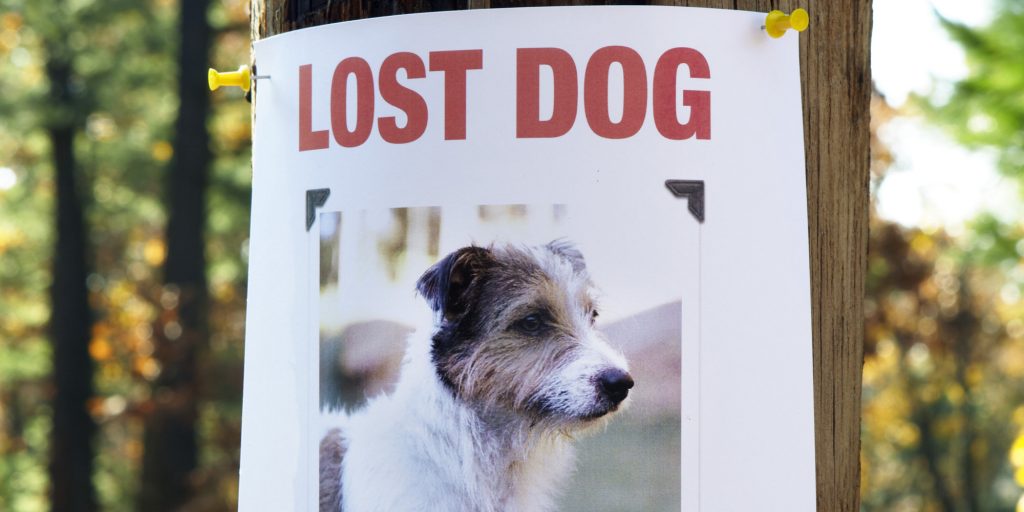
What to do if your pet is stolen
- Act quickly! The first minutes and hours after you’ve noticed your dog is missing can be vital in getting them home safely.
- Report the crime to the police as soon as possible, and make sure your dog is recorded as stolen, not missing. This will mean the police can pick up any trends and give you advice in line with what’s happened recently in the local area. Make sure you get a crime reference number, and use this to keep the police updated with any developments.
- Contact the microchip database that your pet is registered with and report them as missing, so they can inform you if anyone tries to re-register the chip number.
- Get in touch with vets and rehoming centres in the area, and your local dog warden. Ask them to get in touch with you if a dog matching your pet’s description is rescued or brought in for treatment.
- Check your home and local area thoroughly, as well as any places your pet likes to go. You can also make posters to display in local areas like parks and vet surgeries, encouraging people to keep an eye out for your dog. The poster should include at least one clear photo, a description including any distinguishing features, and some details on the circumstances in which they were stolen.
- Social media sites like Facebook and Twitter can be hugely helpful in spreading the word in the local area. Create a post, share in local groups and encourage family and friends to keep a look out for your dog. You can also forward your post on to local vets and charities and ask them to share with their followers. To ensure your post is seen by a wider audience, make sure your privacy settings are set to public, and use a simple hashtag so you can see who’s tweeting about it. You can also regularly search social media to see posts from people who may not have seen your post.
- Register your pet on missing pet websites such as Petslocated, Dogslost or the National Pets register.
- Consider calling your local newspaper and media outlets to publicise the theft and warn others to be cautious, and to look out for your dog.
- It’s also so important to be aware of the impact this situation can have on you and your family — losing your pet can be a traumatic event. If you’re in need of some more support, consider contacting the Blue Cross Pet Bereavement Support Service.
Categories
- Appeals (7)
- Events (10)
- News & Updates (68)
- Happy Tails (23)
- Past Appeals (84)
- Past Events (95)
- Support & Advice (46)
- Challenge Events (2)
Recent Posts
Related posts

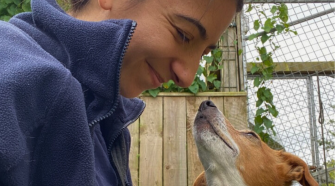
How to Prepare Your Home for a Rescue Dog
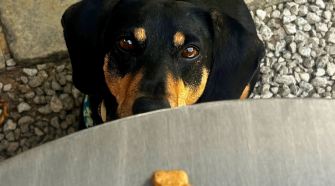
Dog-Friendly Places to Eat in the Cotswolds

Beat the Heat: Homemade Frozen Treats Your Dog Will Love

To report cruelty or an animal in distress call 0300 1234 999





